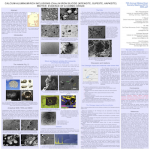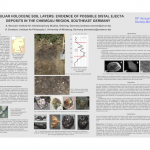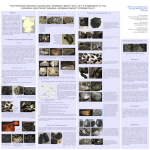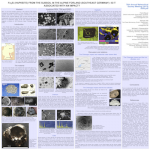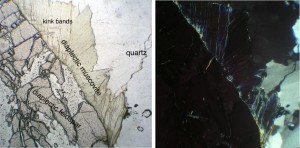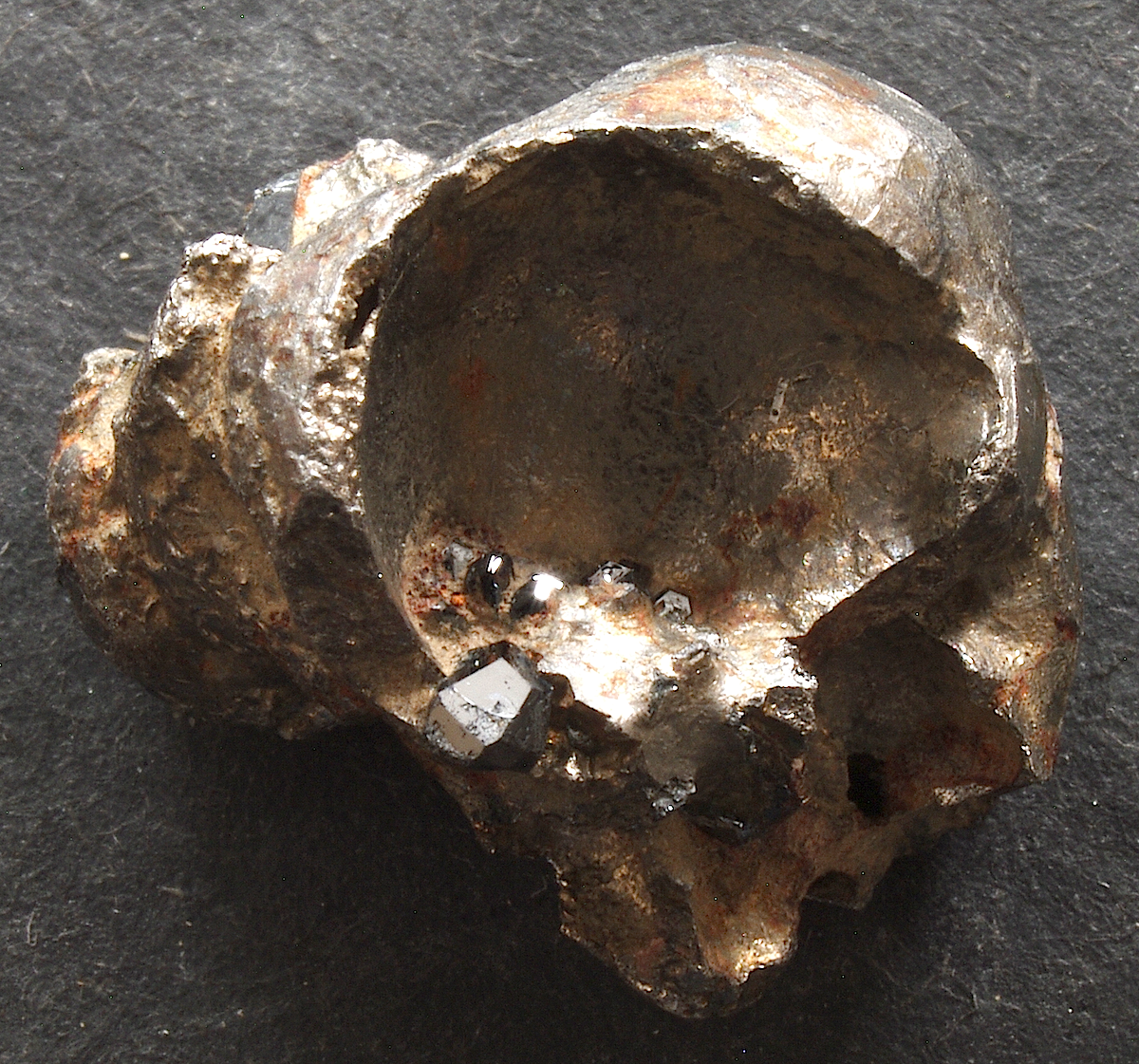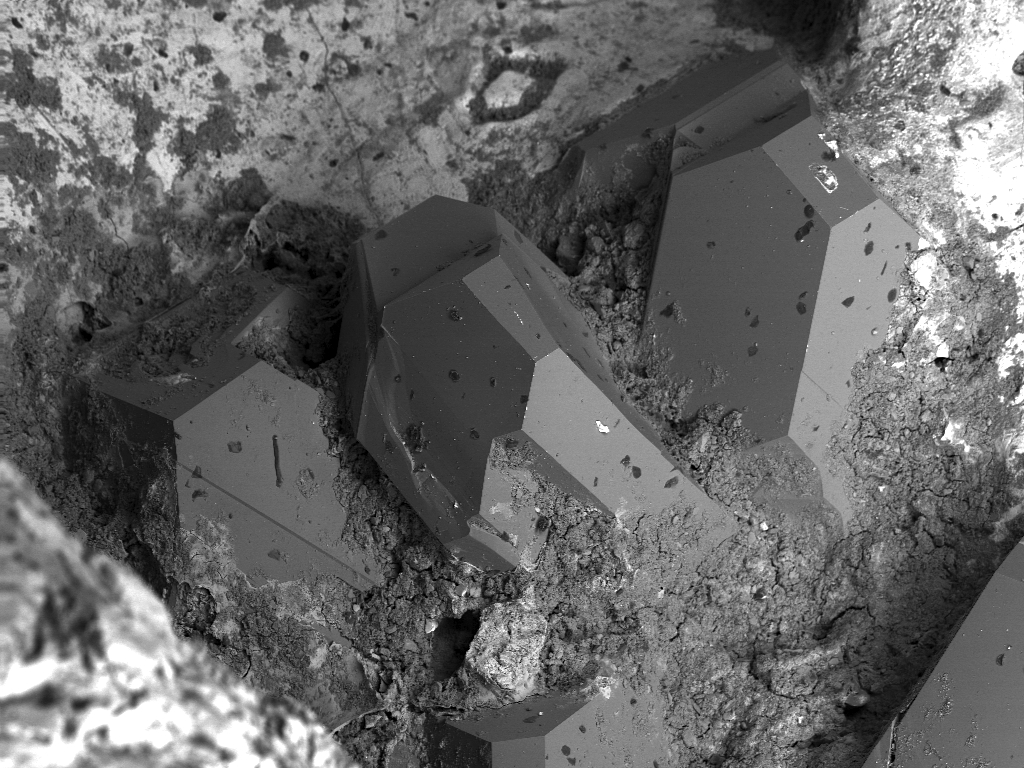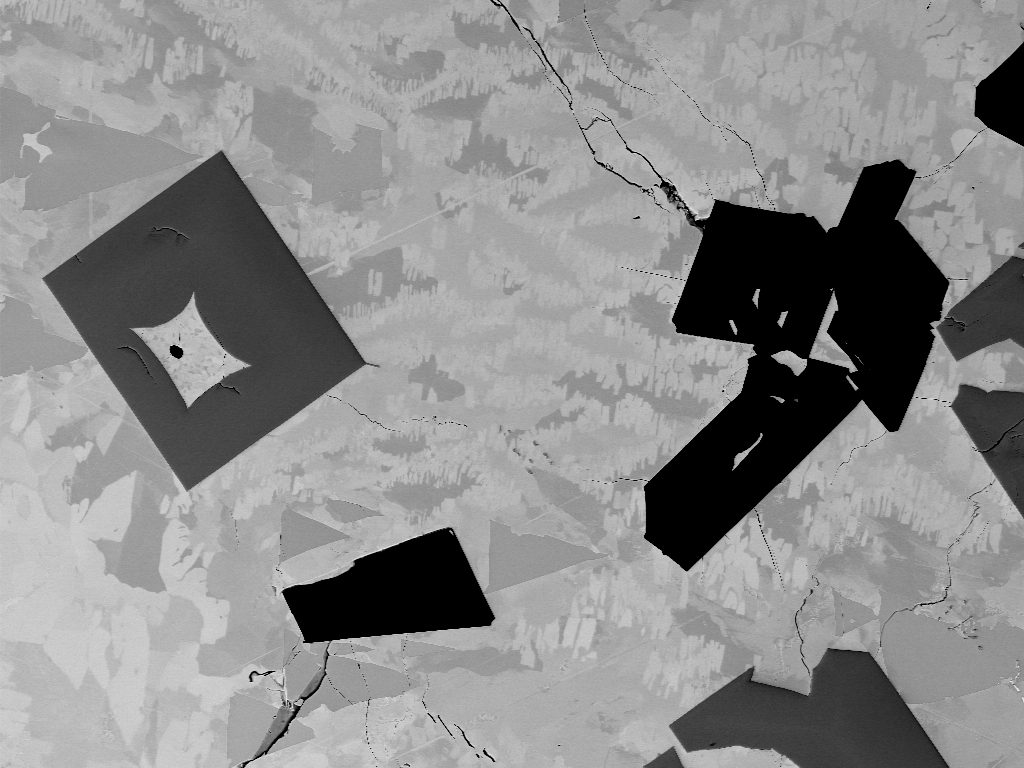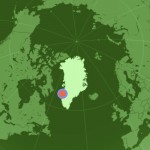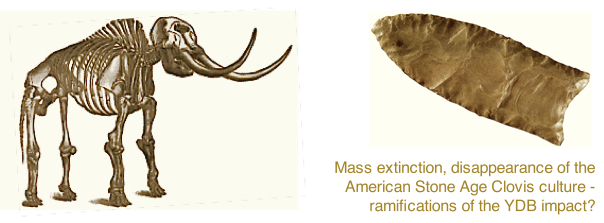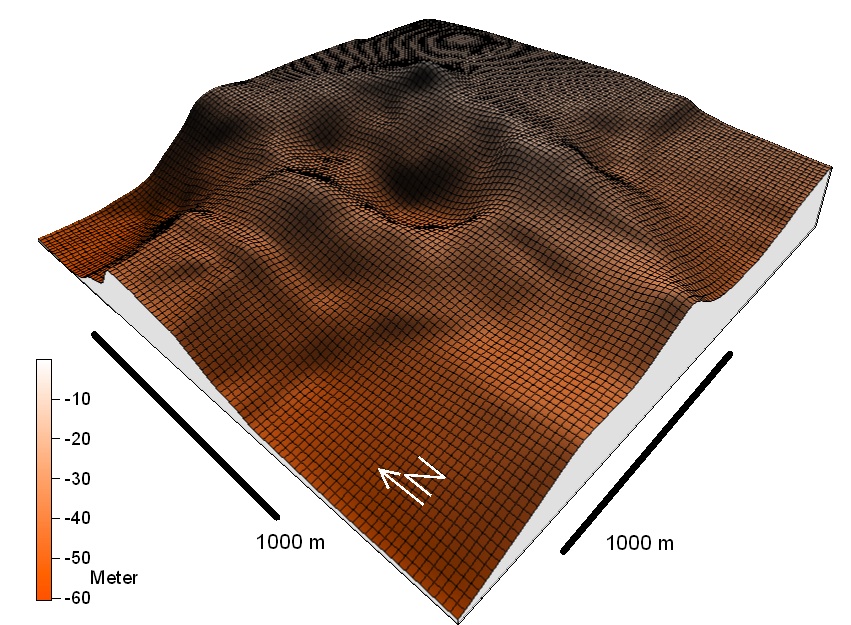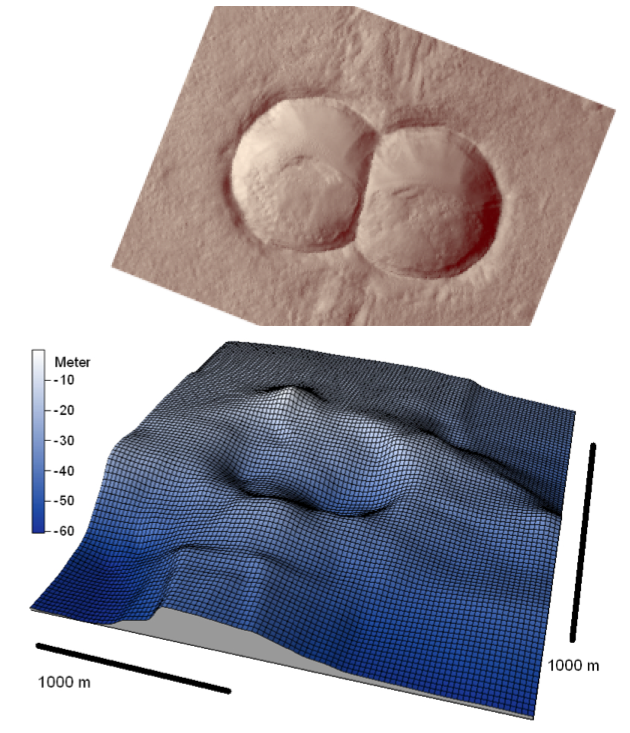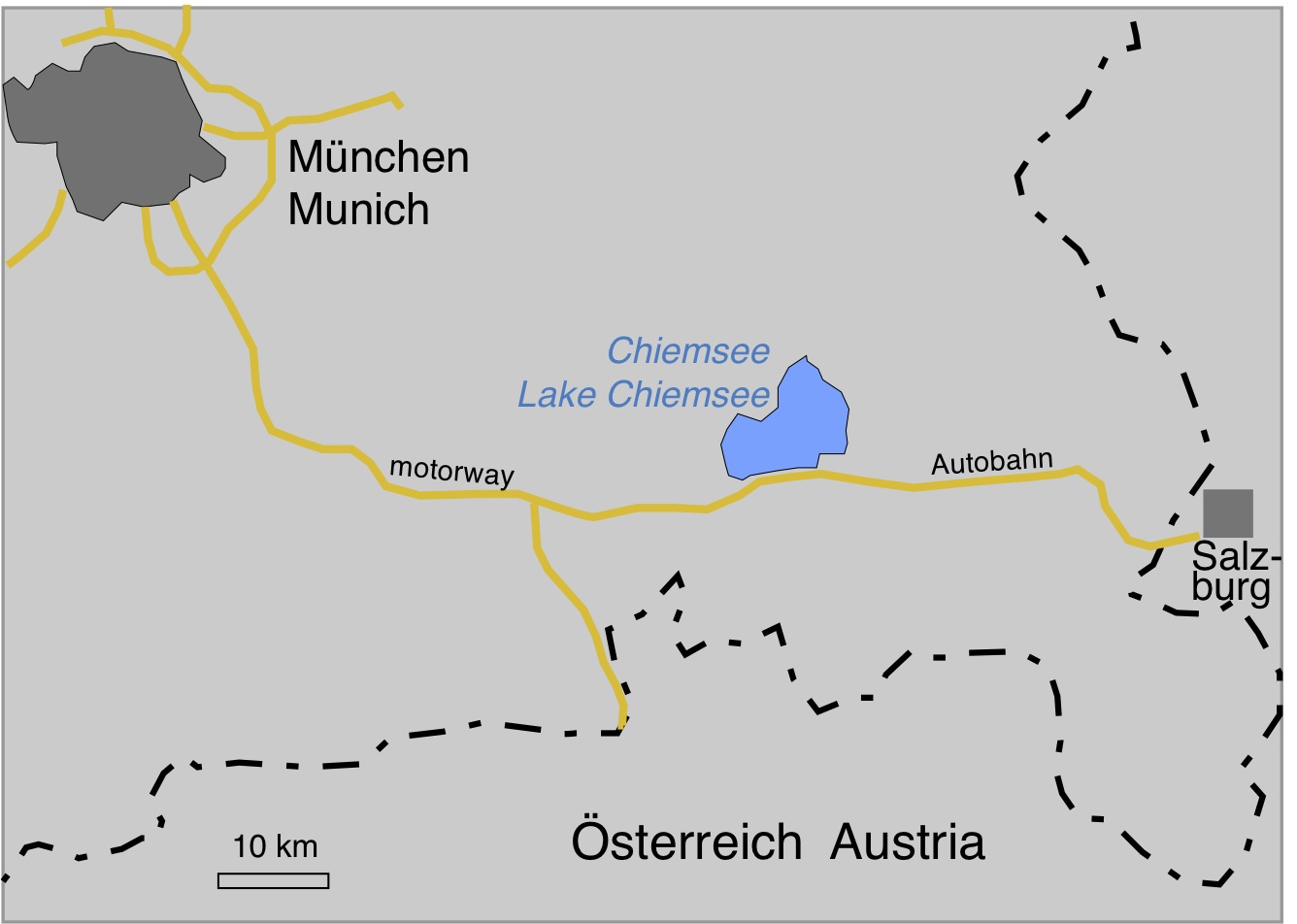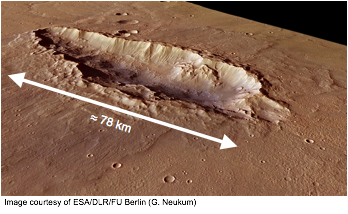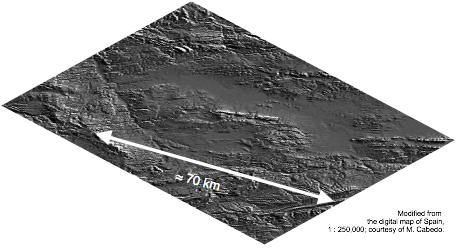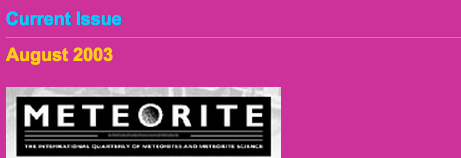
An Impact Crater Chain in Northern Spain
by K. Ernstson1, U. Schüssler2, F. Claudin3 & T. Ernstson4
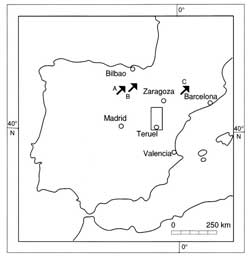
Fig. 1. Location map for the Azuara – Rubielos de la Cérida impact crater chain (frame in Fig. 2) and suspected impact locations (A, B, C).
The term impact crater chain is commonly used when there are three or more lined up impact structures that have formed in a single impact event. Apart from a few established paired craters (e.g., Clearwater West and East in Canada, Ries and Steinheim Basin in Germany), three terrestrial crater chains with well-separated structures have so far been proposed. The alignment of eight structures in Missouri, USA, is peculiar, but age considerations do not speak in favor of a single event, and only two of them are established impact craters. The well-known Aorounga imapact structure in the Chad may be accompanied by one or possibly two additional craters, but respective field evidence is outstanding. In 1998, a single impact event thought to have formed five individual structures, though spread over two continents, has been suggested. On the other hand, multiple impact structures are well known from the Moon, Mars, Venus, and Jupiter’s satellites Ganymede and Callisto. Especially the detection of the impressive crater chains on Ganymede and Callisto, mysterious until the 1994 crash of the torn Shoemaker-Levy 9 comet with Jupiter, raised new interest and initiated investigations about multiple impacts by disrupted asteroids and comets. Here, we report on the previously established Mid-Tertiary Azuara impact structure in Spain and its nearby Rubielos de la Cérida companion crater as parts of a more or less continuous crater chain, the first of this kind known on Earth, of more than 100 km length (Fig. 1, 2).
Fi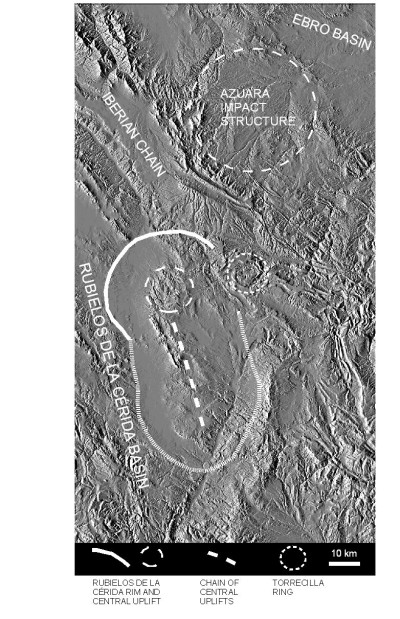 g. 2. The topography of the Azuara/Rubielos de la Cérida crater chain. (from the digital map of Spain, 1 : 250,000; provided by Manuel Cabedo).
g. 2. The topography of the Azuara/Rubielos de la Cérida crater chain. (from the digital map of Spain, 1 : 250,000; provided by Manuel Cabedo).
The detection of the suggested impact crater chain has been a long process. It begins in the eighties and early nineties with the establishment (by K. Ernstson and co-workers) of the 35 – 40 km-diameter Azuara impact structure at the margin between the Alpidic fold belt of the Iberian Chain and the Tertiary Ebro Basin (Fig.2). The structure is affected by advanced erosion and partly covered by post-impact sediments, and a very soft sedimentary target may have contributed to an altogether weak morphological signature. However, in the rim region, there is abundant and impressive evidence of the giant impact event macroscopically documented by the occurrence of various kinds of typical impact rocks, dislocated megablocks and extended impact ejecta. On a microscopic scale, strong shock metamorphism in the form of melt glass, diaplectic glass (a glass produced by shock damage and not by melting) and all kinds of planar deformation features in minerals is found. According to these occurrences, Azuara figures in the international Earth Impact Database of currently about 165 authentic impact structures worldwide.
In 1994, K. Ernstson and co-workers made a first reference to a suspected companion crater, the Rubielos de la Cérida structure, of similar size, located some 50 km south-southwest of the Azuara structure, and of the same Mid-Tertiary age. Meanwhile, Rubielos de Cérida presents all evidence of an impact structure. It shows the complete impact inventory as are a distinct morphology including a prominent central uplift, peculiar structural features, extended impact ejecta, suevite breccias, impact melt rocks, and strong shock metamorphism (Fig.3). As especially peculiar finds in and around the Rubielos de la Cérida structure, we mention
- melt rocks composed of nearly pure silicate glass.
- a carbonate-phosphate melt rock composed of calcite globules in a matrix of phosphate glass. This melt rock is assumed to reflect a liquid immiscibility of a carbonate and a phosphate melt similar to a liquid immiscibility of carbonate and silica melt found in impact rocks from, e.g., the Ries and Haughton craters.
- glassy amorphous carbon particles in a hitherto unknown bond with oxygen, possibly fullerenes. The amorphous carbon may have originated from extremely shocked limestones or as a quench product from shock-melted coal in the target rocks.
- large deposits of in situ shocked conglomerates which are composed of quartzite cobbles displaying prominent fractures and craters formed by collision and impact spallation.
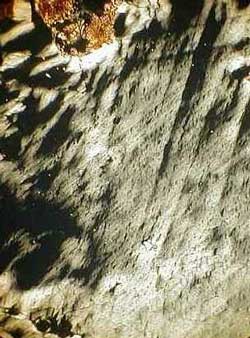 Fig. 3. Photomicrograph of strongly shocked quartz from the Rubielos de la Cérida basin.
Fig. 3. Photomicrograph of strongly shocked quartz from the Rubielos de la Cérida basin.
In a paper with more than 40 photographs and photomicrographs recently published by the Geological Museum in Barcelona (Spain) (see References), a comprehensive progress report on Azuara and Rubielos de la Cérida as the currently most prominent terrestrial doublet impact structure is given.
Despite the clear impact evidence, some aspects of the morphological signature of the Rubielos de la Cérida structure remained a worry. In the north and in the west, the structure is morphologically well defined to display a rim, a depression and a central uplift as is expected for a complex impact structure (Fig. 2). The morphological contours, however, become diffuse and leave a circular symmetry towards the east and the south. (The hilly terrain adjoining the central uplift in the northeast must not confuse, because it is built up of post-impact younger sediments.) In the beginning of a more detailed investigation of the Rubielos de la Cérida structure, we considered this morphology the probable result of a later tectonic overprint. This interpretation became questionable when we extended our field studies to the eastern and southern poorly defined rim regions of the Rubielos de la Cérida structure. Unexpectedly, we found more impact shock features in autochthonous rocks too strong as to have originated from the Azuara and/or Rubielos de la Cérida impacts. In the east, these finds focused on a nearly perfectly circular ring structure formed by steeply dipping beds. The diameter of this structure amounts to about 12 km, and it is called the Torrecilla ring or the Torrecilla impact structure (Fig. 2). The ring is suggested to have formed in the Azuara/Rubielos de la Cérida impact event by a separate projectile resulting in a morphological overlap east of the Rubielos de la Cérida central uplift.
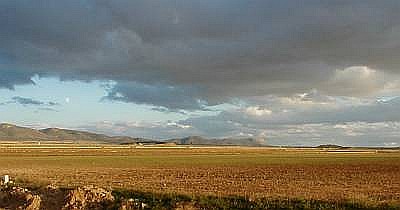
Fig. 4. Part of the central uplift chain emerging from the Rubielos de la Cérida impact basin.
In the south, there is another explanation for the untypical morphology. Actually, Rubielos de la Cérida is not a circular impact structure but forms the northern end of an elongated basin (Fig. 2). Its rims are running roughly in the north-south direction, and also the Rubielos de la Cérida central uplift extends to the south in the form of a mountain chain more or less symmetrical to the rims of the elongated basin (Fig. 2, Fig. 4). This peculiar continuation of both the Rubielos de la Cérida central uplift and basin is closely connected with the omnipresent occurrence of well-known impact features in rocks already documented in the original Rubielos de la Cérida impact structure. The impact evidence comprises structural features, abundant monomictic and polymictic breccias and breccia dikes, extensive megabreccias and petrographical significance in the form of impact glass and shock metamorphism.
As impressive structural signature, we show in Fig.5 a small part of the outcrop only recently produced by a new road cut through the rim fairly near the southern end of the elongated basin c. 20 km northeast of the town of Teruel. The outcrop of several 100 m length provides insight in voluminous drastically fractured and brecciated Buntsandstein and Muschelkalk rock units. As shown in Fig. 5, large-scale flow texture can be observed in the normally hard, now completely shattered rocks, Muschelkalk lens-shaped megablocks are floating within Buntsandstein material, and a prominent terraced faulting occurs. Within the heavily destroyed Triassic layers, large friction planes show intense slickensides and mirror polish (not seen in Fig. 5), and interleaved vesicular and foamy white material probably is crystallized carbonate melt from strong frictional heating of Muschelkalk carbonate. These features covering an area of uninterruptedly at least several hundreds of meters and similarly met in many places of the central-uplift chain and in the basin rims (Fig.6), cannot be explained by normal geologic, tectonic processes. In the cratering process of a very large impact, however, exactly such a scenario is to be expected and easily understood considering the giant rock movements during the excavation of the primary crater and the subsequent collapse of the transient crater in the modification stage. These movements under very high pressures may act so rapidly that the resulting friction temperatures are enough to transform the involved rocks into pure melt glass. We made such a peculiar find roughly 10 km northwest of the town of Teruel in the most southerly part of the central-uplift chain. In part, the glass seems to be completely homogenized suggesting temperatures in excess of 2,000°C (D. Griscom, pers. comm.).
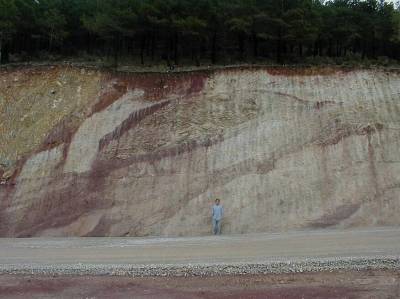
Fig. 5. The crater rim in the southern part of the impact chain.
Impact structures showing deviation from a circular symmetry may result from a very low-angle oblique impact or from a post-impact tectonic deformation (as is the case with, e.g., the large Sudbury impact structure). The latter can in this case be excluded, and a low-angle trajectory of the projectile conflicts with the circular shape of the Azuara structure and the Torrecilla ring as obvious companions to Rubielos de la Cérida. Therefore, the formation of the 80 km long basin by a pile of projectiles is rather probable. They caused several individual central-uplift craters more or less strung together morphologically and structurally. Such an uninterrupted crater chain, additionally blown up by the Azuara and Torrecilla structures, is so far unique among terrestrial impact structures.
Because of advanced weathering, the impact melt rocks found so far do not allow for a reliable absolute radiometric dating. Therefore, the most striking evidence for a synchronous multiple impact of Azuara, Torrecilla, and the Rubielos de la Cérida crater chain is provided by the stratigraphic layering of an impact suevite breccia. Extending from the northern part of the Azuara structure up to the southern part of the crater chain near the town of Teruel, this peculiar breccia displaying shock effects and melt clasts (Fig.7) is regularly found at the base of the post-impact (and post-Alpidic) undisturbed Upper Tertiary rocks. The up to 20 m thick horizontally bedded breccia layer always contacts the older Mesozoic folded rocks and is more or less meshed with them without any soil formation. The uniformity of this polymict breccia and its fixed stratigraphic position found in a region of the size of roughly 120 km strongly suggests a single phase of the brecciation and deposition, which is typical for a large impact but not at all expected for “normal” geologic processes.
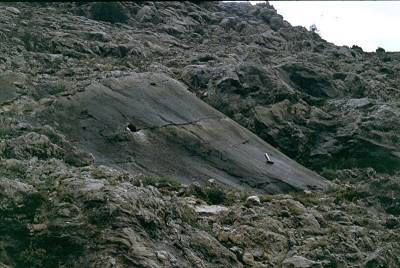
Fig. 6. Megabreccia and polished friction plane in the southern part of the central-uplift chain.
The impact event on the Iberian Peninsula may have been even more spectacular. Three enigmatic deposits (A, B, C in Fig.1) located more than 200 km northwest and northeast of the Azuara structure attract attention, because they show the typical features of impact ejecta deposits, and because their stratigraphic age may be related with the age of the Azuara/Rubielos de la Cérida impact event. All three deposits are composed of strongly plastically deformed clasts in an unconsolidated sandy matrix (Fig. 8). The clasts show heavy striations, imprints, penetration marks and rotated fractures very similar to deformations known from the Azuara/Rubielos de la Cérida ejecta and described also for the Ries crater (Germany) impact ejecta and the Chicxulub impact ejecta in Belize. Abundant moderate shock effects are observed to occur in silicate clasts that contribute to the diamictite deposits B and C (Fig.1). The age is Upper Eocene or younger for deposit A, post-Cretaceous for deposit B, and Upper Eocene or Oligocene for deposit C. Because the diamictites are in each case composed of local material, an emplacement as distant ejecta from the Azuara/Rubielos de la Cérida structures can be excluded. However, local candidates for possible impact craters are not known so far. This may be explained by a tectonic overprint, or they may be buried beneath post-impact young sediments. A systematic search is outstanding. However, the obvious impact signature of the three deposits and the conspicuous age relations with the Azuara/Rubielos de la Cérida impacts suggest that the multiple impact affected an even larger area sized of the order of at least 300 km. Thus, Azuara – Rubielos de la Cérida may in the future turn out to be important for further studies on the disruption of asteroids and multiple (cometary?) impacts on Earth and other planets.
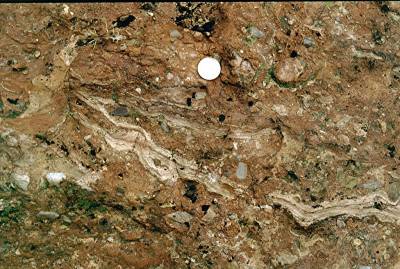
Fig.7. Impact breccia (suevite) exposed in the southern part of the central-uplift chain.
The here proposed large multiple impact event and its age direct attention also to the end-Eocene (38 Ma) mass extinction and the debated possible relation with large impacts, similar to the Cretaceous/Tertiary (K/T) boundary extinction related with the giant Chicxulub impact. As for the end-Eocene mass extinction, the large Popigai impact structure in Russia and the Chesapeake crater in the United States have so far been proposed as possible “smoking guns” of the event. The northern Spain multiple impact could be a further candidate because of its size and the more than 10 km thick sedimentary target. At the time of the impact, a high proportion of this target consisted of carbonate rocks and probably also evaporite (gypsum) layers. Such target rocks in a giant impact cratering process have been suggested to be important in triggering global climate changes.
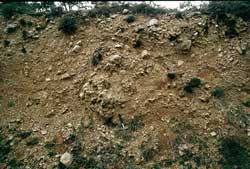
Fig. 8. Probable impact ejecta near Peñacerrada (location B in Fig. 1).
- Fakultät für Geowissenschaften der Universität Würzburg, Pleicherwall 1, D-97070 Würzburg, Germany
- Institut für Mineralogie der Universität Würzburg, Am Hubland, D-97074 Würzburg, Germany
- IES Giola, Llinars del Vallès. Barcelona-08450, Spain
- Am Judengarten 23, 97204 Höchberg, Germany
References
Because of the limited space, only a few references are given here. A comprehensive list may be ordered from the corresponding author (kord@ernstson.de).
Ernstson, K., Hammann, W., Fiebag, J., Graup, G. (1985): Evidence of an impact origin for the Azuara structure (Spain). Earth Planet. Sci. Lett., 74, 361-370.
Ernstson, K. & Claudin, F. (1990): Perlada Formation (Eastern Iberian
Chains, NE Spain): ejecta of the Azuara impact structure. N. Jb. Geol. Paläont. Mh., 1990, 581-599.
Ernstson, K. & Fiebag, J. (1992): The Azuara impact structure (Spain): new insights from geophysical and geological investigations. Geol. Rundschau, 81, 403-427.
Melosh,H.J. and Schenk, P. (1993): Split comets and the origin of crater chains on Ganymede and Calisto, Nature 365, 731-733.
Bottke, W.F., Richardson, D.C. and Love, S.G. (1997) Note: Can tidal disruption of asteroids make crater chains on the Earth and Moon? Icarus 126, 470-474.
Richardson, D.C., Bottke, W.F.and Love, S.G. (1998): Tidal distortion and disruption of Earth-crossing asteroids. Icarus 134, 47-76.
Spray, J.G., Kelley, S.P. and Rowley, D.B. (1998): Evidence for a late
Triassic multiple impact event on Earth. Nature 392, 171-173.
Ocampo, A.C., Pope, K.O. and Fischer, A.G. (1997): Carbonate ejecta from the Chixculub crater: evidence for ablation and particle interactions under high temperatures and pressures. Lunar Planet. Sci. Conf., XXVIII, 1035 – 1036.
Hradil, K., Schüssler, U., Ernstson, K. (2001): Silicate, phosphate and carbonate melts as indicators for an impact-related high-temperature influence on sedimentary rocks of the Rubielos de la Cérida structure, Spain. in „Impact markers in the stratigraphic record“, 6th ESF-IMPACT workshop, abstract book, Granada, 49-50.
Ernstson, K., Rampino, M.R. and Hiltl, M. (2001) Cratered cobbles in Triassic Buntsandstein conglomerates in northeastern Spain: An indicator of shock deformation in the vicinity of large impacts. Geology 29, 11-14.
Ernstson, K., Claudin, F., Schüssler, U., Hradil, K. (2002): The mid-Tertiary Azuara and Rubielos de la Cérida paired impact structures (Spain). Treballs Museu de Geologia de Barcelona 11, 1-62.









































































